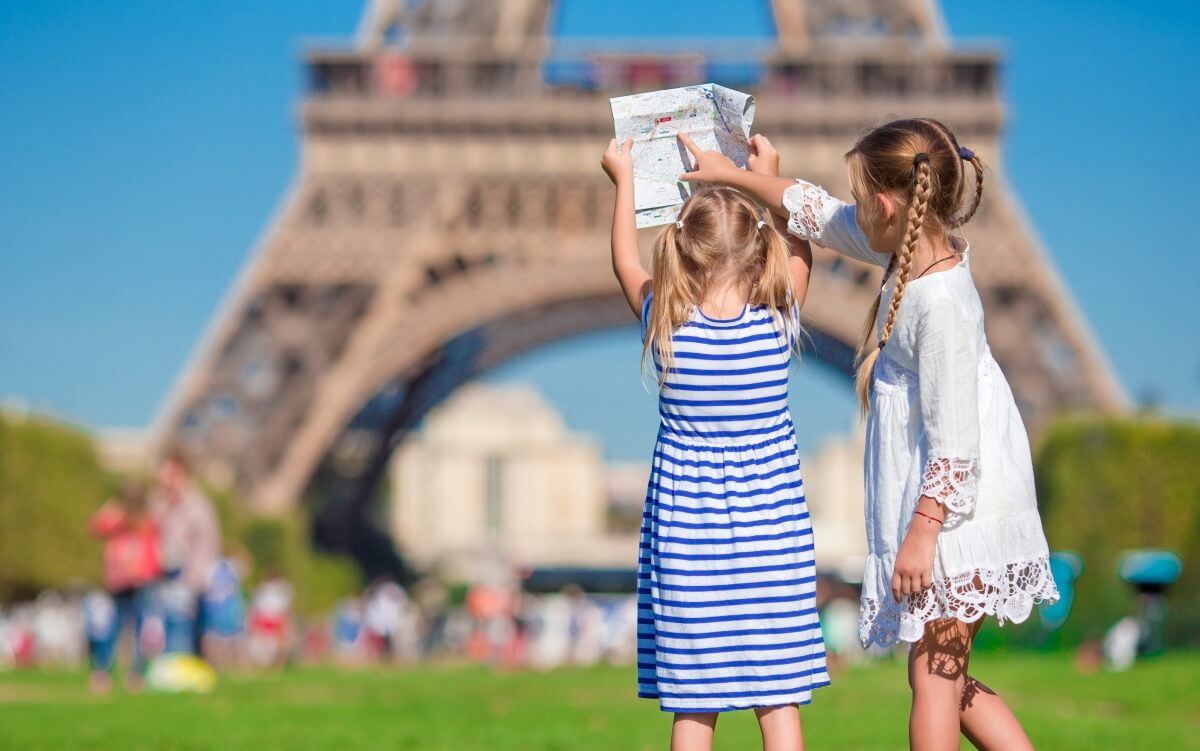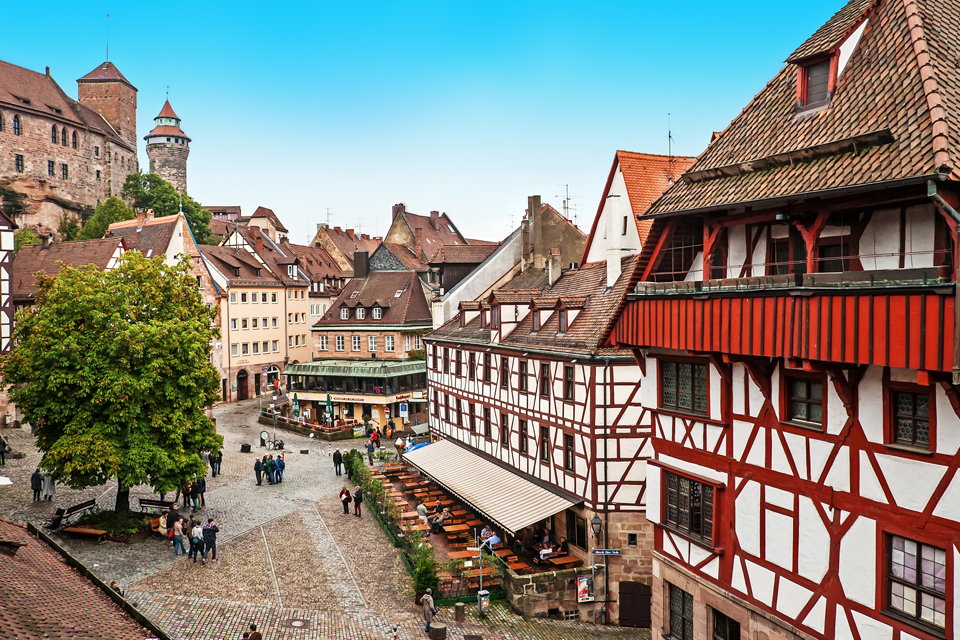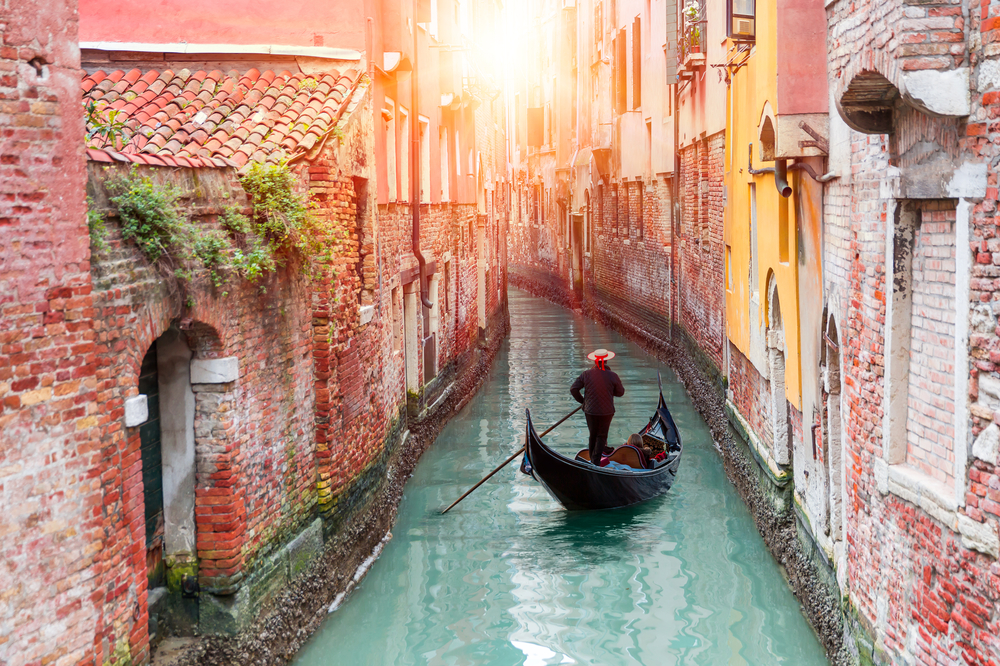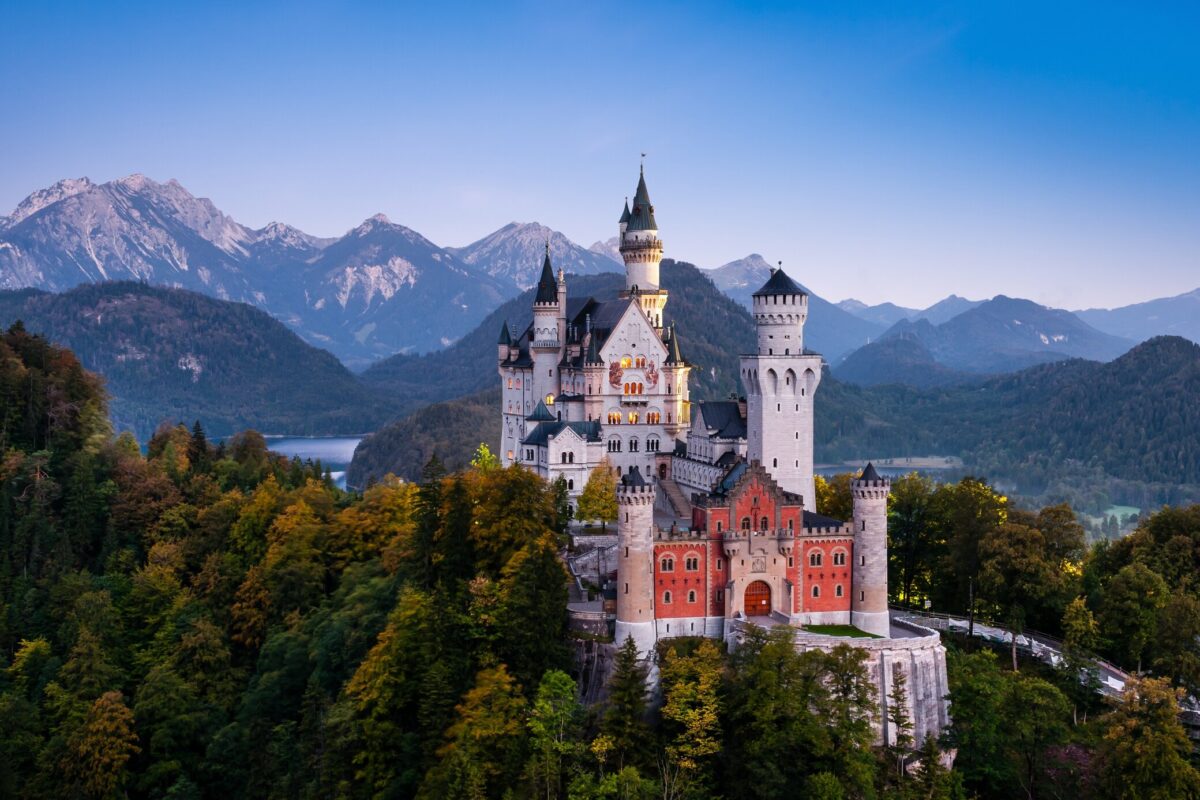Planning your first trip to Europe with a family in tow can be an exciting yet overwhelming experience. Crafting the perfect family vacation itinerary that caters to everyone’s interests and ensures a smooth travel experience requires careful consideration and preparation. But don’t worry, we’ve got you covered! In our comprehensive guide, we will provide you with our expert tips and insights on how to easily navigate European cities, visit attractions, and handle logistics, making your family trip to Europe a memorable and stress-free one. Whether you’re a seasoned traveler or a first-timer, stay tuned until the end to find out about the best places to take your kids in Europe and take your family trip to the next level.
How to plan a family trip to Europe from the USA

Whether you opt for the iconic sights of Paris, the family-friendly atmosphere of Copenhagen, or the vibrant culture of Barcelona, the key is to embrace the adventure and enjoy the journey together. Planning a trip to Europe with kids from the USA involves several important steps to ensure a smooth and enjoyable experience.
First, you’ll need to decide which countries you want to visit. Consider your family’s interests and preferences. Do you want to explore historic cities, relax on beaches, or immerse yourselves in diverse cultures?
Explore a 15-day family-friendly France itinerary starting from Paris
Travelling to Europe with a toddler
Traveling around Europe with a toddler may require you to look for places with plenty of family-friendly attractions and amenities, such as parks, flat sandy beaches, fun and interactive museums, and various entertainment options to keep the little ones happy. Cities such as Prague, Interlaken, and Salzburg are great cities for little ones with a number of great city parks and outdoor spaces to discover whilst sightseeing and beaches in Croatia are great for families with younger children, with warm shallow waters that are free of strong currents.
Cities like Amsterdam, London, Rome, and Barcelona are known for their accessibility and are exceptionally great for those having to push a stroller. Consider visiting cities that are relatively flat and have pram-friendly public transport.
Traveling to Europe with kids

Traveling to Europe with kids may also require you to consider the travel time between cities and factor in the energy levels of all family members, especially toddlers. That’s why city combinations such as Rome, Florence, and Venice or Prague, Vienna, and Budapest that include short train travel connections are great for families with younger children, especially with many of the trains now offering family-friendly carriages, baby-changing facilities and even play areas onboard to keep younger children happy during the journey.
Booking your flights for Europe
When it comes to booking flights, it’s best to do so well in advance to secure the best prices and options. Be flexible with your travel dates if possible, as this can help you find more affordable fares. Consider direct flights or those with shorter layovers to minimize travel fatigue, especially when traveling Europe with a toddler. You can also try planning your flights around your child’s nap or sleeping times, which can help on longer transatlantic flights to Europe.
By carefully planning and preparing for your family trip to Europe, you can create lasting memories and unforgettable experiences for everyone involved. Many of us at Go Real Travel are seasoned family travelers with young children, so we know your struggles and will do everything we can to make your trip as stress-free as possible.

Want to build your own trip to Europe instead?
Instantly create your own customized trip with our easy to use trip builder
The best destinations in your family vacation itinerary
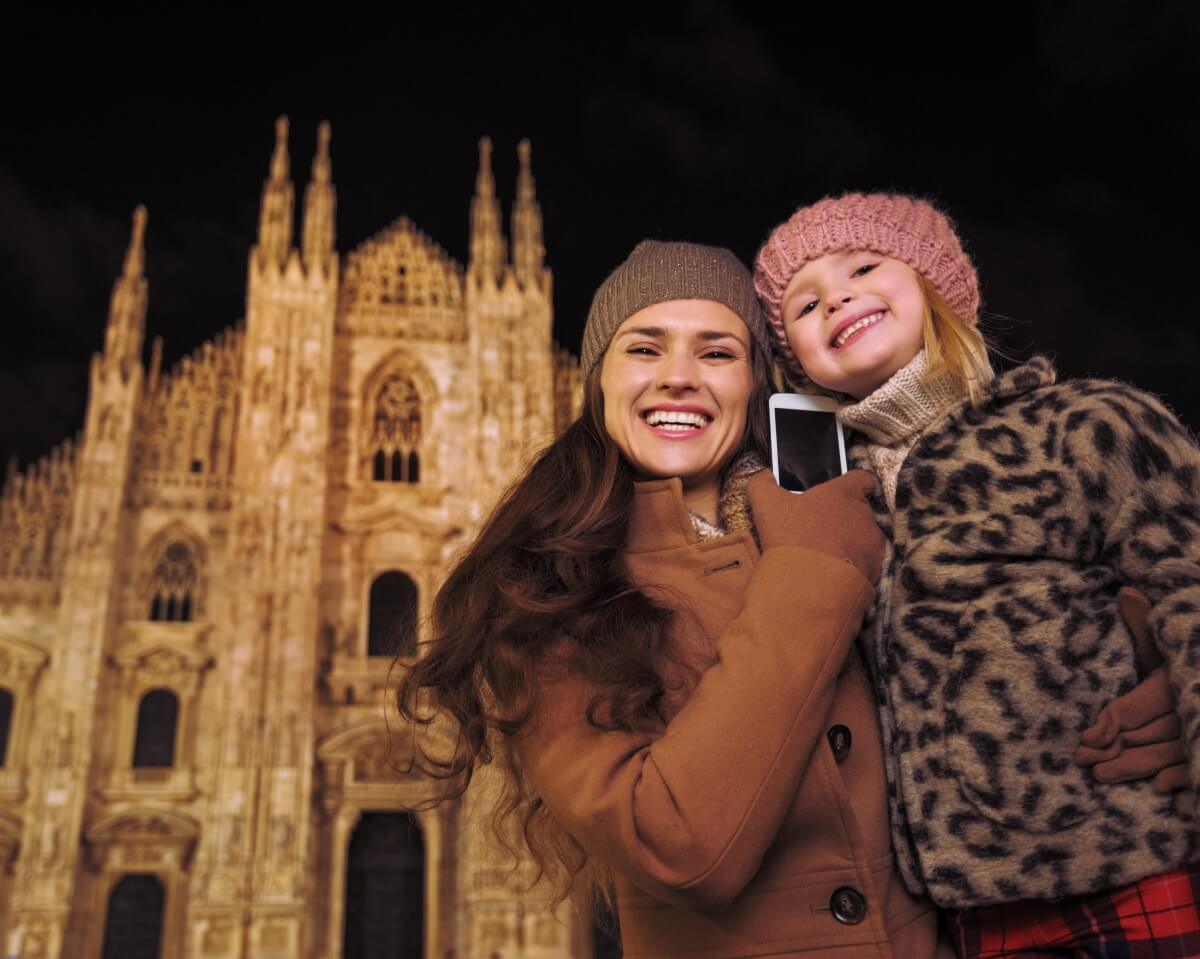
When picking the perfect European city for a family trip, there are a few key factors to keep in mind. First up, consider the season and weather to ensure your little ones aren’t melting like ice cream in summer or shivering like penguins in winter. Next, check out the city’s accessibility and ease of transportation to avoid stressful commutes with cranky kids in tow. Lastly, suss out the accommodation options to find a cozy spot that suits your family’s needs, whether it’s a spacious apartment or a hotel with a pool.
From historic landmarks to cultural experiences, finding a balance between engaging activities for both adults and children is the best way to travel in Europe with family. Consider jetting off to Paris, where you can dazzle the kiddos with the Eiffel Tower and buttery croissants galore. For a dose of fairy-tale magic, Copenhagen in Denmark offers storybook castles and whimsical Tivoli Gardens. And if sun-soaked adventures are your vibe, Barcelona in Spain serves up sandy beaches and mind-blowing Gaudí architecture for the ultimate family photos. If you’re one for the scenic views and nature’s delights, then you can consider heading towards Norway, Iceland, Finland, or even Sweden and witness the magnificent sights of the aurora borealis, also commonly known as the northern lights.
The best part about Europe is how connected and easily accessible all the countries are. You can spend one night in Amsterdam and be in Germany within hours!
If you’re craving a European adventure without blowing the bank, then consider European cities like Prague and Budapest, where medieval charm meets wallet-friendly prices.

European cities also offer a plethora of outdoor adventures for families. From sprawling parks perfect for picnics and bike rides to adrenaline-pumping activities like zip-lining and rock climbing, there’s no shortage of ways to enjoy the great outdoors with your loved ones. Some top destinations for adventure-seeking families are Croatia for kayaking and snorkeling, Tuscany for canyoning and zip wiring, Slovakia for ice skating and sledding, and Switzerland for thrilling gondola rides and mountain-side bobsledges.
Additionally, if you’re looking to add a touch of creativity to your family trip, then European cities have a lot to offer, with a wide range of hands-on workshops and classes for families. From glass-blowing sessions in Venice to cooking classes in Barcelona and Florence featuring local delicacies, your little ones can learn new skills and have fun in a unique and interactive setting. Did you know that Spain was one of the first countries in Europe to make ceramic art?
Explore the best of Prague, Vienna and Budapest with your family
How to plan a family trip to Europe from the USA: Airfare & when to book?
When it comes to booking flights, start by researching different airlines and comparing prices to find the best deals. Consider factors such as layovers, baggage allowances, and in-flight amenities to ensure a comfortable journey for your family. Under two’s typically travel for free when sitting on an adult’s lap, but you may want to consider booking them a seat for long-haul flights or bassinets for babies.
Once you’ve chosen your flights, make sure to book them well in advance to secure your seats and avoid any last-minute disappointments. Research the cities or regions that you’ve planned in your family vacation itinerary and find out which airports are most convenient for your travel needs. Consider factors such as proximity to your accommodations, transportation options from the airport to your destination, and the availability of direct flights. By choosing airports that are closest to your destinations, you can minimize travel time and maximize your time exploring the beautiful sights and attractions Europe offers.
It’s worth considering alternative airports when planning your European family trip. Sometimes, smaller airports located near popular tourist destinations can offer more affordable flights or better connections. Explore nearby airports that may not be as well known but still provide convenient access to your desired locations. Google Flights is a great tool for finding affordable airfare and searching multiple regional airports.
Besides booking flights and choosing the closest airports, don’t forget to research transportation options from the airport to your accommodations. Depending on your destination, you may have various choices, such as taxis, shuttles, public transportation, or rental cars. Consider factors such as cost, convenience, and the size of your family when selecting the best transportation option. All these factors are extremely crucial while planning a trip to Europe to ensure a relaxed vacation. And don’t worry about car seats, almost all transfer companies can arrange airport transfers or shuttles including car seats for all children’s ages, and car rentals always have a selection to rent, should you decide not to bring your own.
Best time to live the European dream with your family?
Europe experiences a range of climates depending on the region and season. From sunny Mediterranean beaches in the summer to snowy winter wonderlands in the Alps, each season offers unique experiences for families to enjoy.
The best times to take your family trip to Europe can vary depending on your preferences and the activities you want to enjoy. However, the spring and summer months from April to August tend to be popular for family travel because of milder weather and longer daylight hours, making it easier to explore and enjoy outdoor attractions. Here are a few activities that you can add to your European family vacation itinerary:
Spring (March to May):

Spring in Europe is a time of colorful celebrations that showcase the rich cultural heritage of the continent. You may also choose to immerse yourself in the magic of Amsterdam’s Tulip Festival, where nature’s beauty takes center stage. This lovely event celebrates the iconic tulip, a symbol of the Netherlands’ rich horticultural heritage. As you stroll through the meticulously manicured gardens, you’ll be transported to a world of wonder, surrounded by a sea of tulips in full bloom.
The Easter markets in Krakow, Prague, and Vienna are typically located in the heart of the cities, such as the Main Market Square in Krakow, Old Town Square in Prague, and Schönbrunn Palace in Vienna. The markets usually run for several weeks leading up to Easter Sunday, offering visitors ample time to immerse themselves in the festive atmosphere. The festival also offers the perfect opportunity to savor local delicacies such as Easter lamb, babka (sweet bread), and mazanec (Easter cake). Easter egg hunts are a staple of the holiday, and kids love the thrill of searching for those colorful treasures. Interactive games like egg rolling or egg decorating add an extra layer of enjoyment to the festivities. From making Easter bonnets to crafting cute bunnies, these hands-on experiences will keep them entertained and inspired.
Summer (June to August):
When summer arrives in Europe, it brings with it a delightful transformation. The landscapes burst into a kaleidoscope of colors, with blooming flowers and lush greenery adorning every corner. A great travel destination for families traveling with kids is the scenic country of Switzerland.
When in Switzerland with the little ones, don’t miss the chance to frolic in the Swiss Alps. Whether you’re hiking, biking, or just taking in the breathtaking views, the Swiss Alps offer a playground of adventures for the whole family. Switzerland is not just about chocolate and watches; it’s also home to vibrant cities like Zurich, Lucerne, and Geneva. These urban hubs offer a mix of traditions and fun activities for kids, making them perfect for a family vacation.
You can also consider taking a detour trip to one of the Scandi countries, where you and your kids can journey through Viking history and folklore in Scandinavia. Explore ancient Viking sites, museums, and reenactments to immerse your family in the captivating stories of Norse mythology. Discover the sagas of legendary warriors and gods, making history come alive for your children. Norway’s fjords and waterfalls are straight out of a fairytale, and they make for an enchanting backdrop for a family holiday. Take a scenic cruise, go hiking, or simply marvel at the natural beauty that Norway has to offer.
Tourists from all over the world travel to Europe to experience the lively streets of Barcelona’s Sonar Festival, where electronic beats fill the air and art installations captivate your senses. Many also choose to enjoy the enchanting medieval town of Siena in Italy, where the Palio horse race brings the city to life with its thrilling competition and colorful pageantry. Families traveling with older children may have the time of their lives with such thrilling and lively festivities.
If you’re dreaming about a picturesque European family trip, then you can also immerse yourself under the starry skies of Croatia’s Hideout Festival, surrounded by crystal-clear waters and stunning beachside venues, or perhaps you prefer the mystical ambience of the Secret Solstice Festival in Iceland, where the sun never sets and you can revel in the beauty of the midnight sun while enjoying world-class music performances.
Embark on a journey to explore Central and Eastern Europe with your family
Fall (September to October):
Fall in Europe is a great time to indulge in the region’s world-renowned art and music scene. Many cities host art exhibitions, concerts, and theater performances during this season, providing a perfect opportunity to immerse yourself in the cultural offerings of Europe.
Oktoberfest is the world’s largest beer festival & traveling funfair held annually in Munich, Germany. It is a 16 to 18-day folk festival running from mid or late-September to the first Sunday in October, with more than six million people from around the world attending the event every year. While Oktoberfest is known for its beer tents and party atmosphere, it also offers plenty of family-friendly activities and attractions. Families with kids can enjoy a mix of traditional Bavarian culture, delicious food, and fun rides in a lively and welcoming setting.
From merry-go-rounds and mini roller coasters to fun houses and bumper cars, kids can have a blast experiencing the thrill of the fair while parents can relax and enjoy the festivities. Families can participate in traditional Bavarian games and contests, such as sack races and tug-of-war, among others.
While the grand festivities are vastly enjoyed, a word of caution for those traveling with families: Oktoberfest can get crowded, especially on weekends and late evenings, so it’s crucial to have a plan for navigating the festival with your kids. Make sure to keep an eye on your children at all times, establish a meeting point in case you get separated and consider using a stroller or a baby carrier for younger kids to easily move through the crowd.
Another popular festival throughout the UK is the Harvest Festival. Harvest festivals in the UK trace their roots back to ancient pagan traditions where communities celebrated the bountiful harvest season with feasting and showing gratitude for the abundance provided by the land, during the yearly agricultural cycle.
Over the years, these festivals have evolved from pagan rituals to Christian ceremonies. The focus shifted towards offering thanks to God for the harvest, with churches playing a central role in organizing celebrations. Today, harvest festivals continue to be a vital part of British cultural heritage, blending old traditions with modern practices. Many towns and cities now host their own harvest festivals, featuring farmers’ markets, food tastings, live music, and other family-friendly activities that celebrate the harvest season in a fun and engaging way.
In Scotland, the “Kirn” marks the end of the harvest season with lively dances and feasts. In Wales, the “Nos Galan Gaeaf” celebrates the darker months ahead with bonfires and storytelling. Meanwhile, England’s “Harvest Home” sees villages coming together for communal meals and music, embodying the spirit of community and gratitude.
For those who prefer a more relaxed pace, fall in Europe also offers the chance to unwind and rejuvenate in the region’s famous spa towns and wellness retreats. The world-renowned Hungarian baths across Budapest are also kid-friendly, allowing for a whole family spa-cation.
Further read: 15 Most charming towns and villages in Germany
Winter (November to February):
As the snow blankets the beautiful landscapes, immerse yourself in the thrill of skiing down the majestic Alps or snowboarding through the powdery slopes. Feel the adrenaline rush as you glide effortlessly on the ice rinks, showcasing your skating skills amidst the enchanting winter wonderland. A lot of hotels also offer skiing lessons for children of all ages. You can rent the equipment on an hourly basis and go on a ski date with your spouse while your kids are safely taken care of at the ski resorts.
But the winter charm doesn’t end there! Europe comes alive with a myriad of festivals that celebrate the season in all its glory. From the world-famous Christmas markets that adorn the streets with twinkling lights and festive cheer, to the exhilarating guyfawkes celebrations that fill the air with fireworks, candy apples, and sparklers in the UK, there is something for everyone. Indulge in the delectable flavors of mulled wine and gingerbread, while browsing through the stalls filled with unique handicrafts and traditional treats.
Whether you’re exploring the charming Christmas markets of Germany or witnessing the dazzling Northern Lights in Scandinavia, winter in Europe promises an unforgettable experience filled with joy, adventure, and cultural delights. Another very popular festival during this season is the Carnival of Venice in Italy. This enchanting event takes place in the beautiful city of Venice, where locals and tourists alike don elaborate masks and costumes, transforming the streets into a mesmerizing spectacle of color and mystery. The carnival is filled with music, dance, and theatrical performances, creating an atmosphere of joy and celebration that is truly unforgettable.
It’s also important to consider the timing of your family trip. Peak travel seasons in Europe, such as summer and major holidays, can result in higher airfare and crowded airports. To avoid these challenges, consider traveling during shoulder seasons or off-peak times when flights are typically more affordable and airports are less congested.
Further read: 10 European cities to visit this winter
How long should you plan a trip to Europe with kids?
While there is no one-size-fits-all answer, it is important to strike a balance between exploring multiple destinations and allowing enough time to truly immerse yourselves in each city, all of which is an essential step in planning a European family trip with kids.
To make the most of your family trip, a recommended duration would be around 2-3 weeks. This duration allows you to create a well-rounded itinerary, where you can visit multiple cities and still have enough time to fully immerse yourselves in each destination. From the enchanting streets of Paris to the historic wonders of Rome, this time frame allows you to delve into the unique culture, cuisine, and attractions of each city, while also providing ample opportunities for rest, naptimes, park visits, slow lunches and if you’re lucky some relaxation.
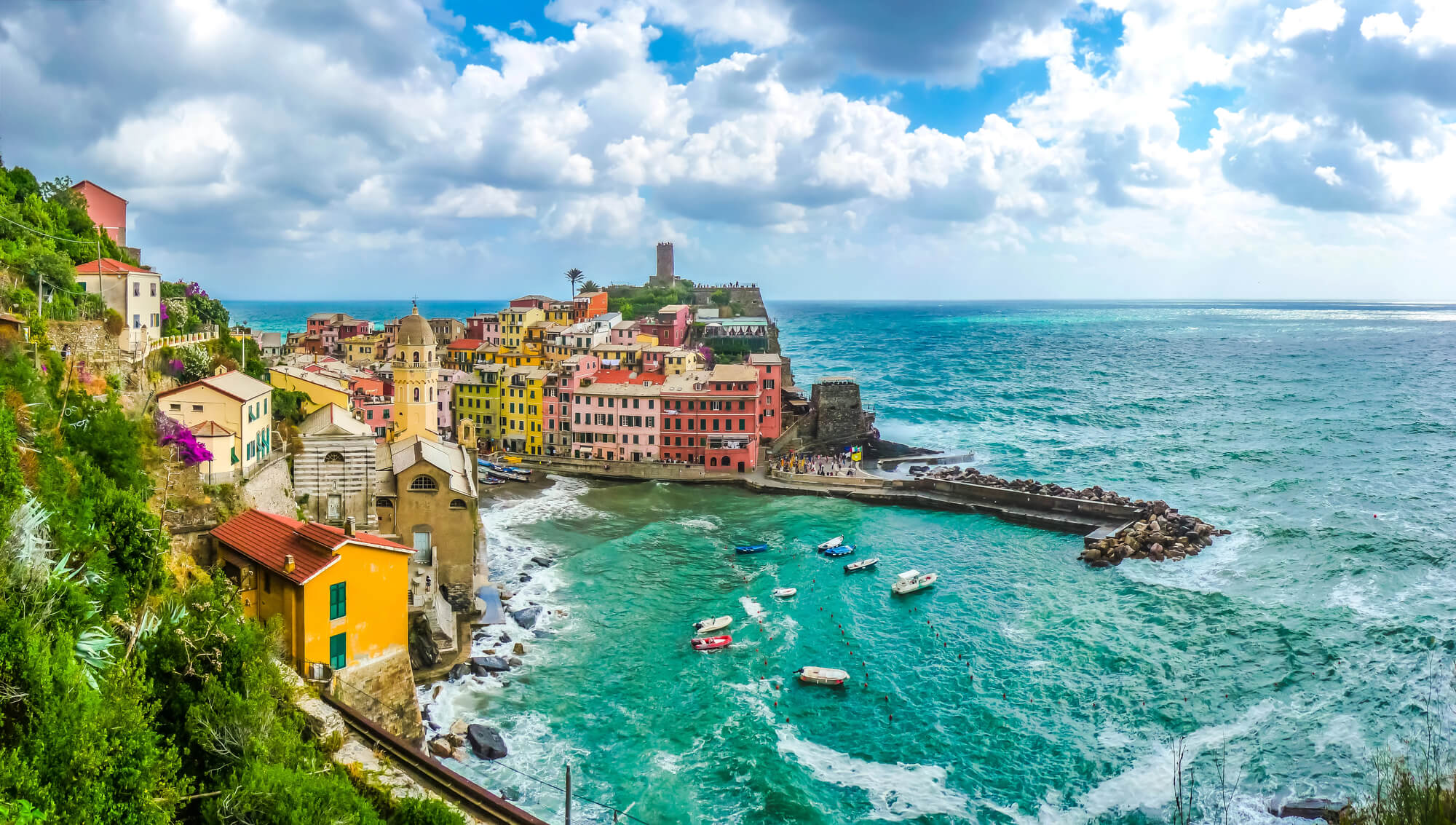
Want to build your own trip to Italy instead?
Instantly create your own customized trip with our east to use trip builder
Best places to take & stay with kids in Europe: Accommodations
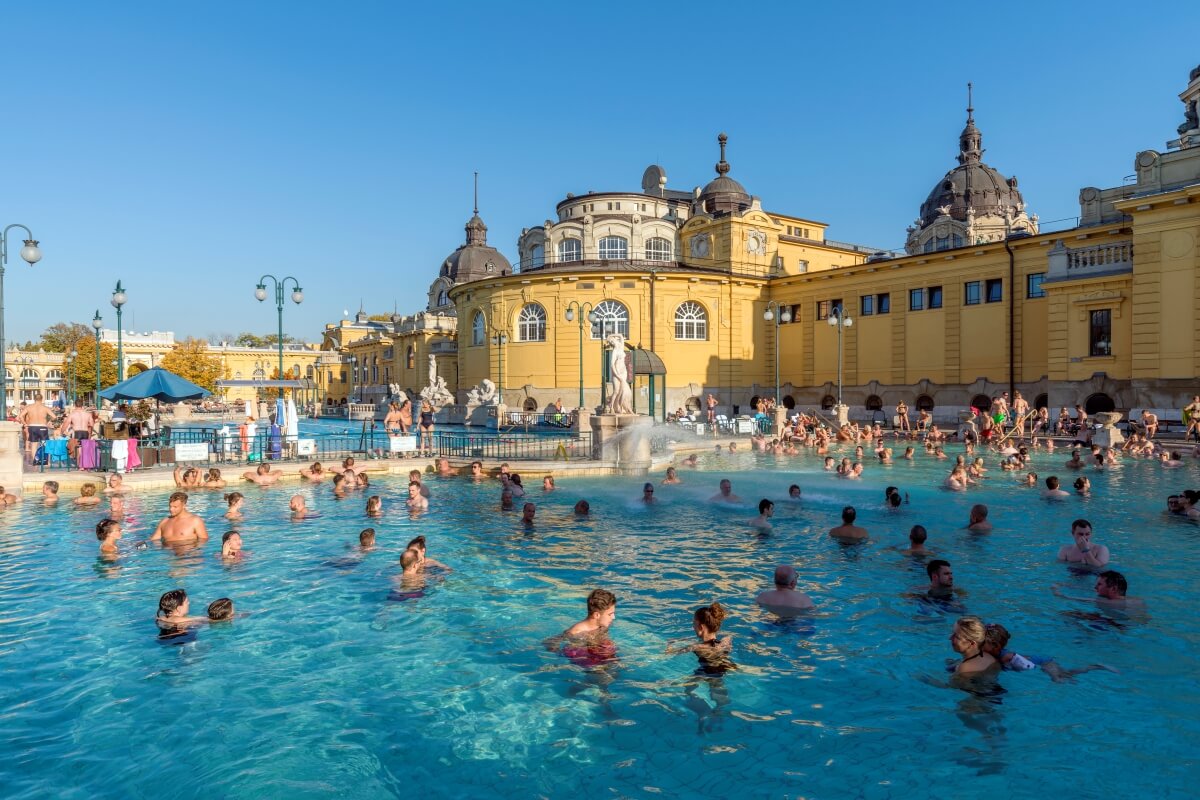
Selecting the perfect accommodation for your family trip to Europe is crucial to ensuring a comfortable and enjoyable experience for both you and your kids. When choosing where to stay, consider factors such as location, amenities, and room size. Opt for accommodations that are centrally located as well as have access to local transportation such as the metros and railways, making it convenient to explore the city with your little ones. Look for family-friendly amenities such as cribs, high chairs, and play areas to keep your children entertained and comfortable during your stay.
Another important aspect to consider when selecting accommodation for your first trip to Europe with family is the type of lodging that best suits your family’s needs. Whether you prefer the convenience of a hotel, the coziness of a vacation rental, or the flexibility of a hostel, there are plenty of options to choose from.
At Go Real Travel, we have joined forces with apart-hotels to offer families the convenience of preparing meals for their little ones. With a complimentary breakfast provided, children can begin their day with a nourishing meal. Our lodging options include roomy family suites and two-bedroom layouts, guaranteeing a comfortable sleeping space for kids and allowing adults to enjoy their evenings without disturbing anyone’s rest.
How and when to plan tours?

The ideal time-frame for booking tours in Europe can vary depending on the destination, time of year, and popularity of the tour. It is recommended to book tours in Europe at least 3 to 6 months in advance to secure your spot and avoid disappointment. Popular tours and attractions tend to fill up quickly, especially during peak travel seasons, so booking early can help you avoid missing out on must-see experiences.
Additionally, booking tours in advance can also help families save money by taking advantage of early bird discounts and promotions. By planning and booking tours in Europe early, families can also have more flexibility in choosing the dates and times that work best for their travel itinerary.
At Go Real Travel, we specialize in arranging tours that are perfect for children, whether they are young or teenagers. Speak to our travel experts to plan a Europe trip with family, many of them with extensive travel experience with young families.
Transportation for your European adventure? We’ve got you!
Families looking to explore Europe by train can rely on websites like Rail Europe, Eurail, and Trainline to make their booking process simple and stress-free. With options for different ticket types, family compartments, and discounts for children, these platforms cater to the needs of families traveling together. From high-speed trains to scenic routes, families can choose the best option for their European adventure.
When you book with Go Real Travel, we’ve got your train tickets covered, plus we provide special train carriages on specific routes with toys for kids and TV screens for watching movies and shows. Let us take care of your worries while traveling to Europe with kids.
Know about the local customs
Before jetting off to Europe, take some time to familiarize yourself with local customs and cultural norms. For example, in Italy, it’s customary to greet people with a kiss on each cheek, while in Germany, it’s polite to address people using their title and last name. By doing a bit of research beforehand, you can avoid unintentionally offending locals and show respect for their way of life. Additionally, it’s also necessary to pay attention to local dress codes and norms. In some European countries, such as Italy and Spain, dressing modestly when visiting churches or religious sites is important.
Be mindful of cultural differences and avoid behaviors that may be considered rude or offensive. For instance, in France, it’s polite to say “bonjour” (good morning) when entering a shop or restaurant, and “merci” (thank you) when leaving. Familiarize yourself with basic phrases in the local language, such as greetings, please, and thank you. Even just attempting to speak a few words in the local language can show respect and appreciation for the culture. For example, in Germany, saying “Guten Tag” (good day) and “Danke” (thank you) can go a long way.
How to pack for your family trip to Europe?
Planning your first trip to Europe with family? Don’t miss out on packing the essentials! Passports, visas, travel insurance, and medical documents should be at the top of your list. When it comes to clothing, don’t forget to bring versatile clothing options that can adapt to changing weather conditions. Layering is a great strategy, and don’t forget to pack swimwear for unexpected sunny days.
To keep your little ones comfortable and entertained, make sure to pack toys, snacks, diapers, and any necessary medications. For your day trips, a well-stocked daypack with water, snacks, sunscreen, and first aid supplies is a must. Consider bringing travel accessories like strollers, carriers, and portable cribs to make traveling Europe with a toddler more convenient but worth checking to see if they can be provided locally. And don’t forget adapters and chargers for your electronics. Reusable suction bags will also come in handy for shopping and storage, especially if you want to travel light, it can save a lot of space. Lastly, ensure that your older kids know important emergency contacts and hotel information for added safety and peace of mind.
Further read: Packing tips for central Europe itinerary
How much can you expect to spend?
When planning a family trip to Europe with kids, budgeting is key to make sure you have a smooth and enjoyable experience. Let’s start with flights – prices can vary depending on when you book and where you depart from. On average, round-trip prices range from $500 to $1500 per person from the USA to Europe. As for accommodation, it all depends on the type of lodging and location. You can expect to spend around $100 to $500 or more per night. When it comes to getting around Europe, transportation costs like train tickets, metro fares, and taxis can add up to $50 to $100 per person per day. Fortunately, younger travelers often travel for free or can take advantage of reduced fares and entry tickets
Don’t forget to budget for tours and activities too, which can range from $50 to $200 or more per person. And of course, you’ll need to set aside some funds for food – plan for around $50 to $100 per person per day. Lastly, consider allocating 5% to 10% of your total trip cost for travel insurance premiums.
Once you’re in Europe, it’s a good idea to have some money to hand. Credit cards are great for larger purchases, but keep some cash handy for smaller transactions. In many countries such as Italy, Spain, and Croatia, cash is still king, and many places will still prefer cash payments for small purchases. Look for cards with no foreign transaction fees to avoid extra charges and look into travel cards such as Revolut and Wise, which not only protect your main bank account but save you on foreign transaction fees and bad currency exchanges.
By carefully budgeting and planning, you can estimate a total trip cost of $3000 to $8000 or more for a one-week family vacation in Europe. This includes flights, accommodation, transportation, tours and activities, food, and insurance. Do some research, and plan ahead, and you’ll have a memorable and financially manageable family trip!
Trust Go Real Travel to handle all your concerns!
With an overwhelming number of tasks to tackle, allow Go Real Travel to assist you in planning a trip to Europe with kids while you relish the journey. Our team understands the importance of family, comprising staff members who have children and have effortlessly explored Europe with their own families. Feel confident in your booking, knowing that you’re conversing with travel experts who have first hand knowledge of traveling with children.

